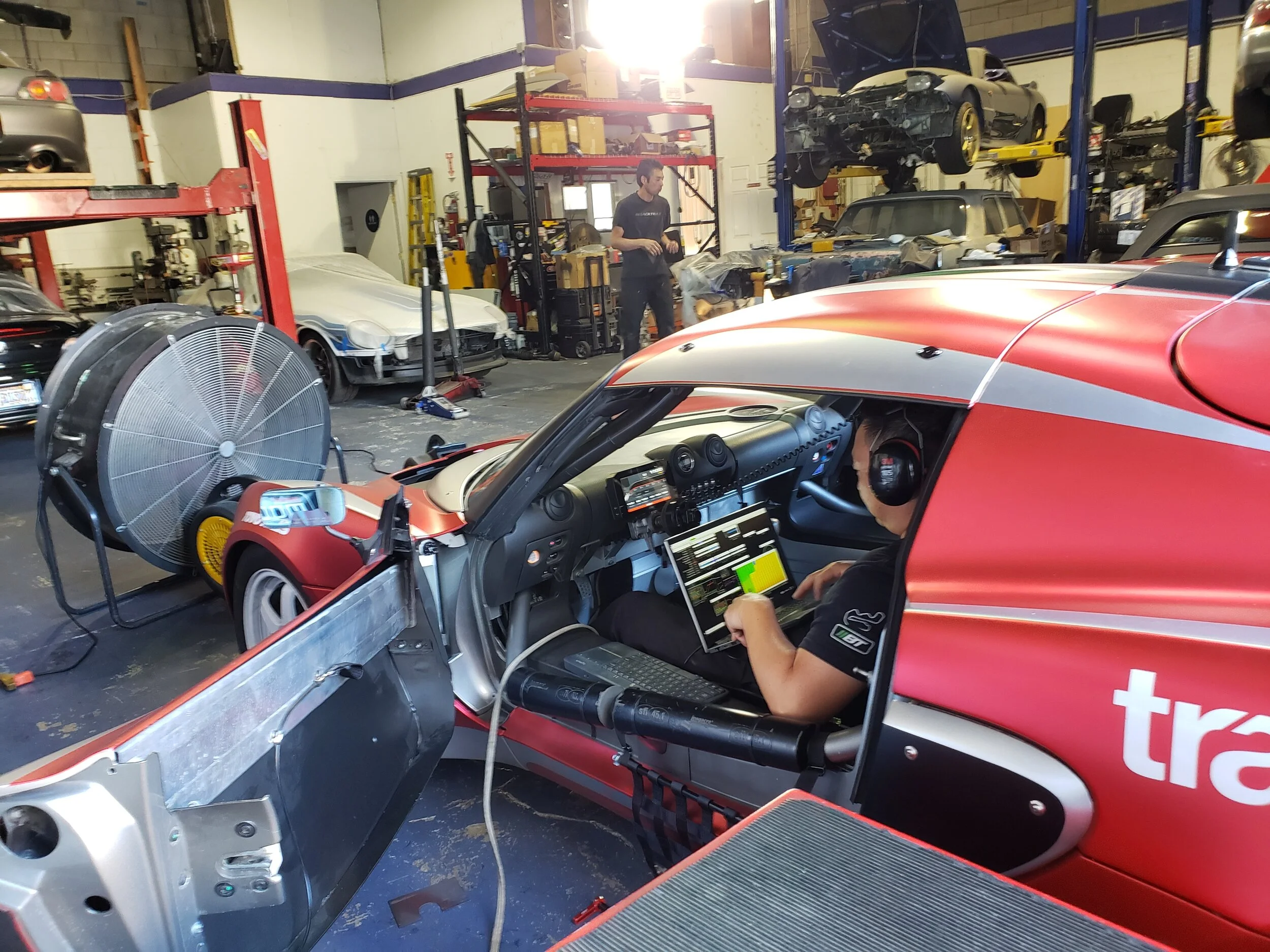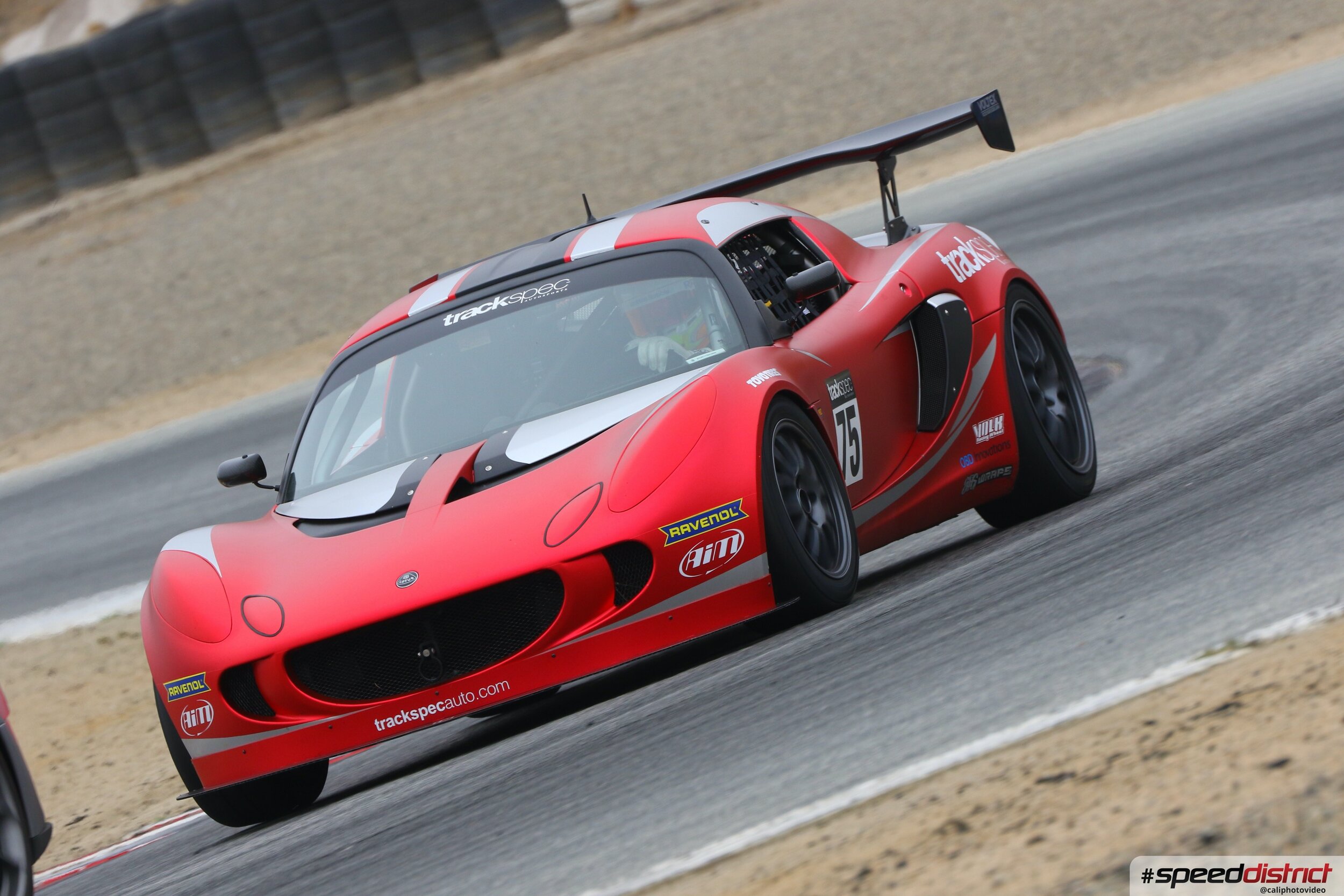If you’re looking for:
Part 1: The Rebuild, go here.
Part 2: The Wrap, go here.
Part 3: More Goodies, go here.
Part 4: Aero, go here.
Part 5: Cooling, go here.
Part 6: Fuel & Oil Control, go here.
Part 7: Clutch, Trans, Misc., go here.
Part 8: Roll Cage, go here.
Part 9: Brakes, go here.
Part 10: K24 Swap 1, go here.
Part 10: K24 Swap 2, go here.
Part 10: K24 Swap 3, go here.
Part 11: K24 Head Work, go here.
Part 12: K24 Swap Rewire, go here.
Exhaust
In part two of the K24 swap, we were left waiting for the header to arrive. We ordered a Hytech 4-2-1 header specifically made for this swap, which took a little over a month to get, but was well worth the wait! It fit perfectly. Other than trimming the J-pipe to length it needs no modification to fit any muffler designed for this chassis. Once fitted, all we had to do was make an extension harness for the wideband o2 sensor.
Start Up
AEM has a basemap for the K20 motor that we were able to work from to get our K24 started. Before anything, we pulled the fuel pump fuse and removed the spark plugs to crank the motor over. It took about a minute of cranking to circulate the oil and build oil pressure. After putting the plugs back in and topping off the oil, we cranked it over again and the motor fired right up. The idle was high and surging, but with some minor tweaks to the idle settings, we were able to get it to settle down. Below is a short start up and idle clip.
A quick test drive in the parking lot just to make sure things are working.
Once we got it running, there was a checklist to go through before dyno day.
Bleed cooling system and make sure it doesn’t overheat. Make sure the radiator fan cycles on and off.
Top off engine oil
Make sure the clutch and transmission works. Calibrate the ECU vehicle speed sensor.
Make sure all engine sensors are working and accurate.
Check for fluid leaks.
Make sure the car has a full tank of fuel.
Weigh-in
One last thing to do before dyno day is to get a final weight on the car so that we can figure out how much to de-tune the engine. We started by draining all of the fuel, just to get a base weight. Between the new brakes and the naturally aspirated engine, the car lost about 100lbs. (1789lbs w/o fuel and driver)
We plan to end races with about 4 gallons in fuel in it to prevent any fuel starvation, so we added 4 gallons and added driver weight (1969lbs).
With driver and 4 gallons of fuel.
We’re going to declare a minimum weight of 1959lbs just to account for any variations in scales.
NASA’s ST4 class allows for 12:1 Weight/Power ratio
Modification Factors:
Minimum competition weight <2200lbs : -0.3
NASA Section Width 266mm or smaller (DOT-approved tires): +0.6
Tires with a UTQG Treadwear rating 100 or greater or Toyo RR: +0.6
Our Adjusted Weight/Power ratio is 11.1:1, meaning we can make an average of 176hp
Tuning
We took the car to our regular tuner, Jei at Blacktrax Performance.
The peak horsepower stayed about the same, but what we were after is the area under the curve. The dyno plot below compares the stock supercharged 2ZZ (red) on the same dyno a few months ago, to the K24 on its “full power” tune (green). The K24 made a peak of 199whp/183tq. This is a classic example of why peak number’s don’t mean much.
2ZZ vs K24
After tuning for full power, it was time to play with the drive-by-wire mapping to try and average 176hp. Below compares the full power map, to the ST4 map, to the 2ZZ.
2ZZ vs K24 vs K24 detuned
Testing- Laguna Seca
We signed up for a day with Speed District at Laguna Seca, so we put on our “Laguna Muffler”. The wheels we ordered did not arrive in time, but we were able to borrow a set of 949 6ULs, which are the same size we plan to run (15x8 front and 17x9 rear). We mounted a set of 225/45/15 and 245/45/17 Toyo RRs.
Right off the bat we felt the improvement in low end and mid-range power. Not to mention the awesome sound of a naturally aspirated Honda engine. With about 20 less peak hp, Graham Downey was 6/10ths faster than before with a 1:36.23. Data shows that the car could do 1:35.4! See his in-car video below.
Graham making changes to the damper settings.
A successful test day usually comes with a list of problems to address-
A small oil leak developed that seemed to get worse throughout the day.
The clutch started to slip in the last session, so we are thinking there there was oil contamination.
The new Radical calipers in the front with 2-pot calipers in the rear work great, but the ABS would go into “Ice Mode” when braking at the limit more often. We’re not sure if this is attributed to the brake bias or difference in front to rear wheel diameters yet. We will need to look more into it, but for now the ABS is manageable.
Something that has already been on the to-do list, but reinforced by Graham’s feedback is to fix how much “roll” the car has in corners. It’s currently on 500/700lbs springs, but before going up with spring rate, we will fix the roll center with extended ball joints.
Conclusion
Did we achieve what we wanted? Yes! More usable power and torque, less weight, no heat soak, and a simple engine bay that’s easy to work in. This engine should deliver consistent power lap after lap. It is essentially a stock Honda engine after all. If plans change in the future, the K24 is a great foundation for more power. See our Youtube channel for more videos of the car on track.
https://www.youtube.com/trackspecautosports
Part 1: The Rebuild, go here.
Part 2: The Wrap, go here.
Part 3: More Goodies, go here.
Part 4: Aero, go here.
Part 5: Cooling, go here.
Part 6: Fuel & Oil Control, go here.
Part 7: Clutch, Trans, Misc., go here.
Part 8: Roll Cage, go here.
Part 9: Brakes, go here.
Part 10: K24 Swap 1, go here.
Part 10: K24 Swap 2, go here.







